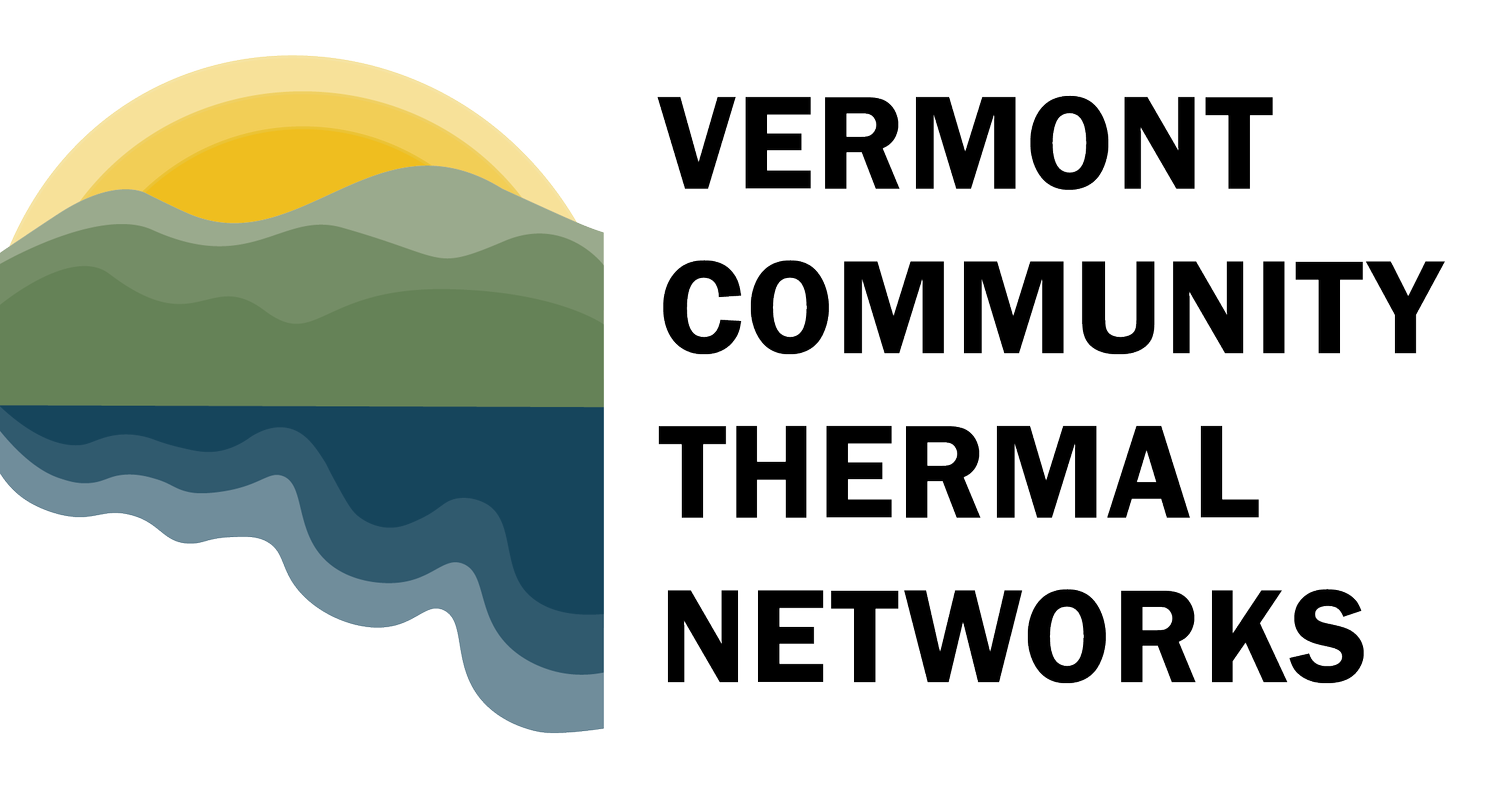THE BASICS
Thermal Energy Networks
In Vermont, we have an opportunity to find and use our own clean heating and cooling.
We don’t have to rely on importing fuels from out of state or install air source heat pumps in every building. We can add geothermal and other kinds of Thermal Energy Networks to our mix of solutions and benefit many of our communities.
You may already know how geothermal energy works for an individual home:
When you turn on your heat, the ground source heat pump inside your house compresses warmth drawn from underground, delivering it into your home as heat.
When you need cooling, the process reverses. The same heat pump delivers cool air and extracts heat, returning it to the earth.
All that heating or cooling comes from underground where the earth is a constant temperature. Water-filled pipes bring that temperature to your heat pump, where it’s concentrated into hot or cold air to keep you comfortable in summer or winter.
What is a Thermal Energy Network?
“Thermal Energy Network” is an umbrella term that can include networked geothermal and other systems that use water to capture, re-use, and share thermal energy between buildings.
Networked geothermal systems use water-filled pipes in closed loops underground to both heat and cool buildings in a neighborhood or town center. Network pipes are installed at the same depth as gas or water pipes and are connected to individual ground source heat pumps.
Thermal energy can be drawn out of the earth, returned to the ground for storage, and shared between buildings with different heating or cooling needs.
Thermal Energy Networks (TENs) can also capture existing waste heat from building ventilation or wastewater and put it to use to heat or cool buildings in the network.
The more neighborhoods and multi-use buildings that are linked to a shared system, the more affordable and efficient it gets.
Want to share this information with your community? Our 1-pager is a great starting point for those who are new to Thermal Energy Networks.
Watch our short videos
Learn the basics of networked geothermal systems and Thermal Energy Networks and how they can benefit Vermonters.
Looking for more detailed information? Check out our growing FAQ page.
Horizontal pipes connect buildings at Smith College in Massachusetts (left) and Oberlin College in Ohio (top right).
These closed loop Thermal Energy Networks will heat and cool the campuses safely, affordably, efficiently, and reliably for decades to come.
Inside buildings, insulated pipes like those pictured to the right (bottom right) transport thermal energy between the building’s heat pump and the rest of the network.
A KNOWN, DEMONSTRATED SOLUTION
Networked geothermal systems and Thermal Energy Networks are already operational on college campuses and in communities across the country. See more case studies here.
-

COLORADO MESA UNIVERSITY
Campus buildings have relied on networked thermal for 12 years and never once used the system’s gas back-up. Geothermal wells located in the green blocks are connected to ground source heat pumps in surrounding buildings. Data, analysis, and case study coming soon.
-

MARKHAM, ONTARIO
This development’s 312 households have a projected 80% reduction in emissions from the networked system and 100% from buildings. Residents are expected to see 30-50% reduction in monthly utility bills and enjoy year-round heating and cooling.
-

AUSTIN, TEXAS
Whisper Valley is growing to include 7,500 homes, two million square feet of commercial space, and three schools on networked geothermal. Paired with solar, this large community-wide system comes close to net zero emissions with low monthly energy bills for residents.
-

FRAMINGHAM, MASSACHUSETTS
Geothermal wells are being drilled now to connect 100 units, including low-income homes, schools, and a fire station. This demonstration project will provide important data for taking networked geothermal to scale and informing other utility- and community-scale projects.
In Vermont, we can build and benefit from our own clean energy systems that are:
SAFE & CLEAN
With no oil or gas in the pipes, there’s no risk of explosions or hazardous leaks. While emissions reductions vary from one project to another, many existing installations have been shown to reduce emissions by up to 90%.
AFFORDABLE & RELIABLE
Customer bills can be low and predictable year-round. Geothermal and other kinds of thermal energy are readily available locally and aren’t subject to market changes, so rates for consumers on a network can be stable.
HEALTHY
Burning fuels – whether gas, oil, coal, or wood – creates air pollution that can cause and worsen respiratory and other health conditions. Thermal Energy Networks don’t involve any combustion, so indoor and outdoor air is safer to breathe.
FLEXIBLE
Once installed, most of the infrastructure for a Thermal Energy Network is underground, so streets, parks, and natural areas remain unobstructed. As each network is designed for a unique location, the systems can fit into Vermont’s landscape, protecting sensitive ecosystems.
RESILIENT & SECURE
Durable plastic pipes underground are protected from disruption. Unlike above-ground fuel storage and outside compressors, Thermal Energy Networks are able to withstand extreme weather like storms and flooding.
EQUITABLE
Most people know geothermal energy as a single-home solution available to those who can afford the upfront cost. A networked geothermal system or Thermal Energy Network can be available to everyone in a neighborhood. Low and moderate income communities can be prioritized, and all can benefit from lower energy bills.
JUST
Side-by-side comparisons of job descriptions for fossil fuel and Thermal Energy Network installations show almost identical skills, so minimal retraining is required and jobs for this skilled labor are maintained. Pipe fitters and gas workers are already constructing Thermal Energy Networks in other states.
LOCAL
We can build our own energy systems in our communities. Local businesses, residents, and municipalities can come together to plan and implement Thermal Energy Networks, growing local wealth by harnessing local resources.








